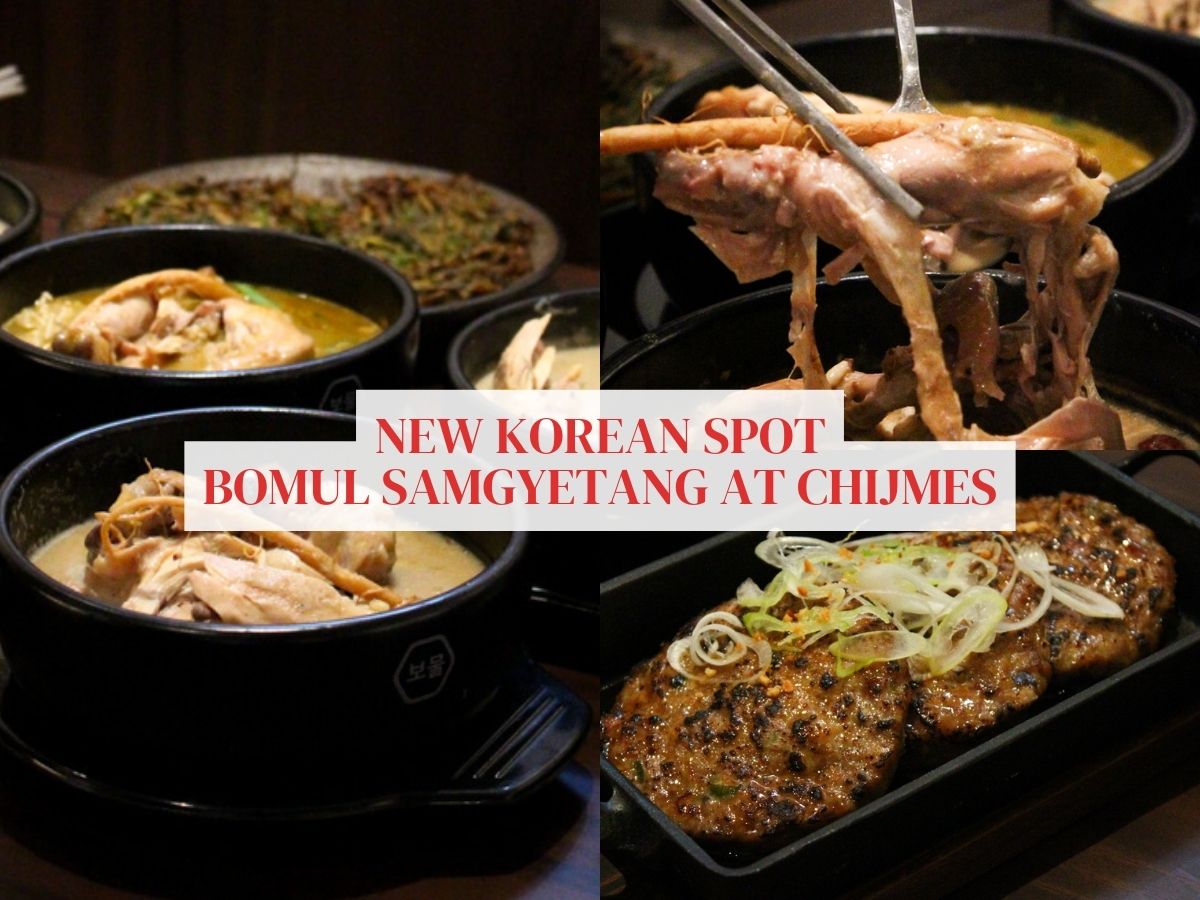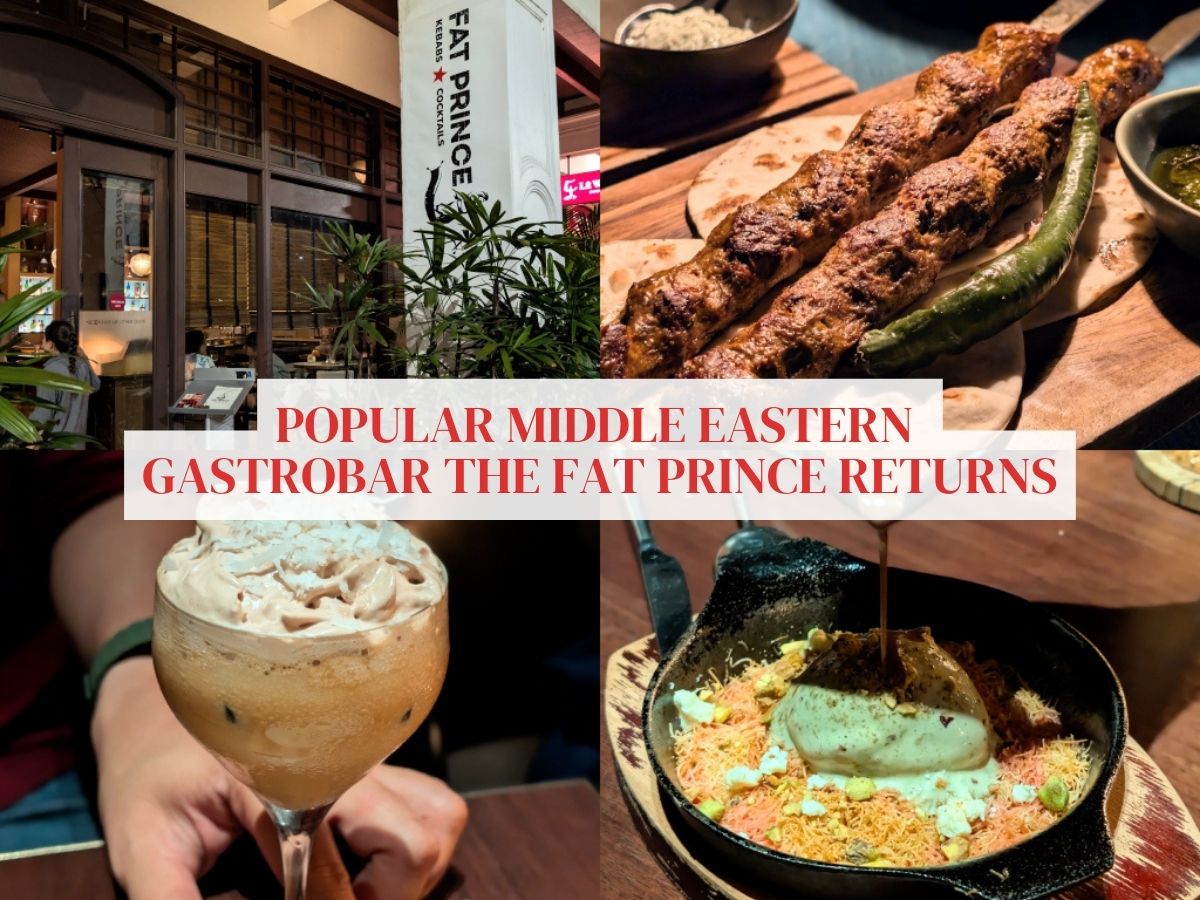[Closed] Review: Tambi’s audacious dance of Korean and Indian cuisines — intriguing but unfinished
- A fusion of Korean and Indian flavours, Tambi is the little brother of Michelin-starred restaurants Meta and Thevar
- Dishes were inconsistent, varying from harmonious fusion to distinct solo flavours, with some needing refinement
- While there were moments of culinary brilliance, the theme did not shine through across the experience
The backstory
From the whisperings of the culinary world, Tambi emerges — a bold nexus of Korean and Indian flavours.
The narrative is undeniably alluring: Two Michelin-starred chefs, Sun Kim from Meta and Mano Thevar from Thevar, join forces to craft a menu that dares to harmonise two of the world’s most vibrant cuisines.
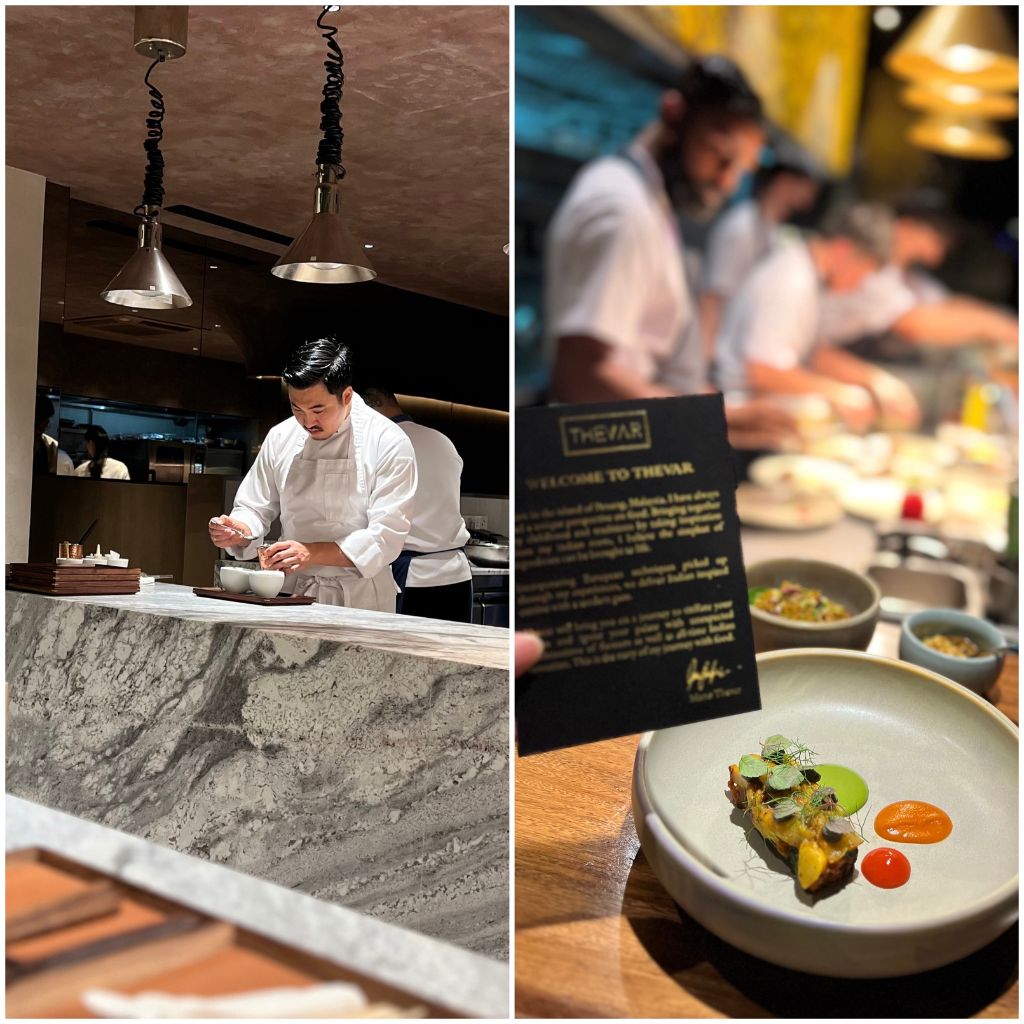
Tambi’s chefs
Sun Kim of Meta: A temple of refined Korean flavours, Meta offers a palette that’s sophisticated and subtle. The meticulous layering — be it the nuanced textures in the tuna with dashi jelly and avocado or the cold and refreshing spice kick in the milmyeon — is testament to Kim’s commitment to honour tradition while pushing boundaries.
There’s a control and precision to Meta’s offerings that echo the disciplined heart of Korean culinary artistry.
Mano Thevar of Thevar: Journeying south, Thevar is a party painted with bold flavours. Mano doesn’t merely cook; he crafts experiences with colour. The beetroot and apple pani puri, with its glittery mauve shell, announces itself despite its minimalist presentation.
Meanwhile, the Amadai with crab rasam melds two proteins without calling undue attention to the scales — brittle and not stiff — thanks to the flawless execution of the Matsukasa-Yaki technique. Indian flavours come alive with a modern gaze.
The chefs’ distinct aesthetics also extend beyond the plate. While Meta brings forth the serenity of the Great Joseon era to the present with curves of cream and lilac, Thevar contrasts with its mercurial swirls of liquid gold and obsidian slates.
Given the distinct styles each chef brings to the table, I was eager to see how Tambi, aptly named “Little Brother” in Tamil, would evolve — considering it’s the brainchild of two culinary icons whose original restaurants were once neighbours with each other on the same street.
[google_ad]
Our verdict
Navigating the world of Korean-Indian fusion, Tambi strikes moments of culinary brilliance juxtaposed with missed potential. The distinctive styles of both chefs shine in dishes such as the pajeon, a testament to the harmonious possibilities of Korean-Indian collaboration.
Nonetheless, a deeper dive into the menu reveals that not all dishes fully embrace this fusion spirit, with some leaning heavily into either Korean or Indian influences and others, such as the banana tart, veering off-theme entirely.
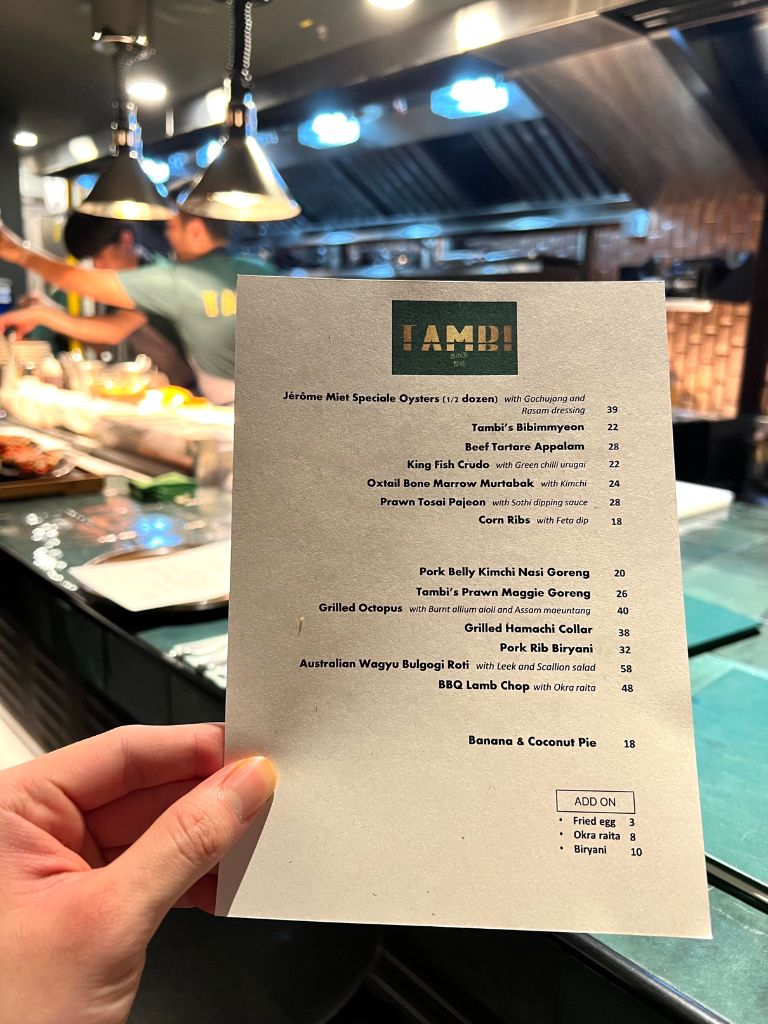
While it’s understandable that familiar flavours from both cuisines, such as the gochujang, curry powder and kimchi, play a role in bridging the fusion gap, there’s room for Tambi to further innovate and transcend these default choices.
The dining experience had its beverage bumps — namely, the mandatory drink policy and the unavailability of the only interesting non-alcoholic drink, the 6 + 8 Jukes (S$14).
That said, it’s worth noting the guava-sparkling water replacement drink stood out with its refreshing floral sweetness, even if the negroni (S$18) felt underwhelming as it was more of an ice cube with cocktail than a cocktail with ice.
What it’s good for
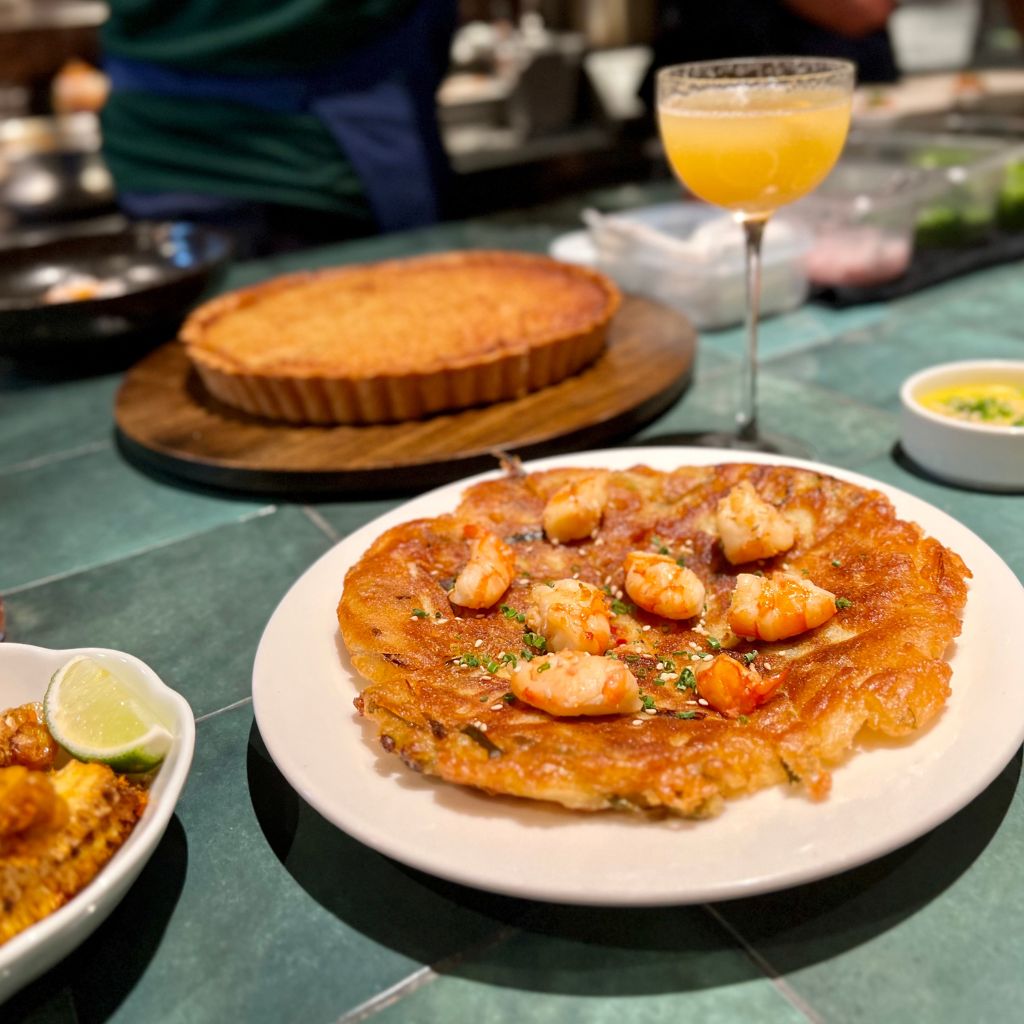
The prawn tosai pajeon (S$28) is testament to the beauty of fusion when done right. Traditionally, a jeon is a simple Korean pancake primarily made from wheat flour.
At Tambi, the chefs innovatively used a tosai (or dosa) batter made from fermented rice and lentils. This helps circumvent the gluten’s softening effect from wheat, giving the jeon a delightful crispness from circumference to centre.
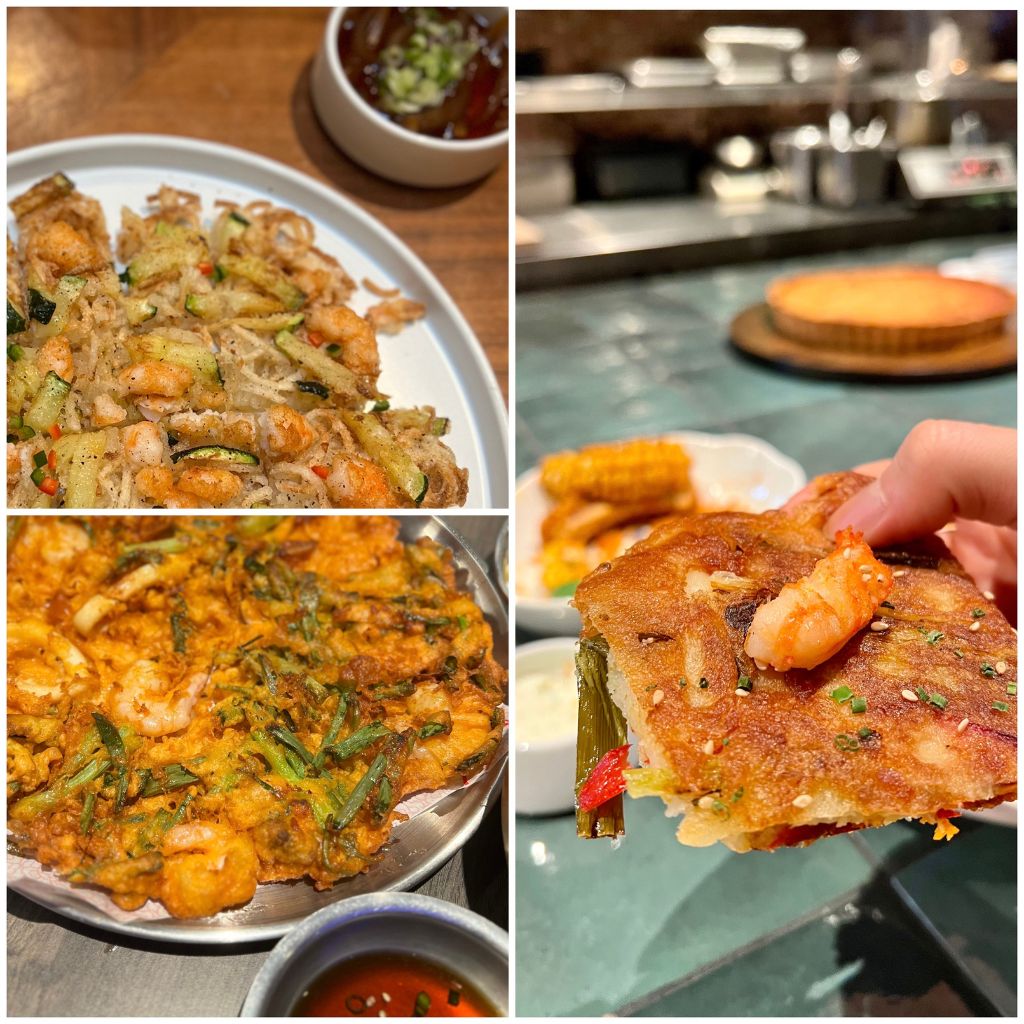
In another unique twist, the tosai batter’s thickness ensures the jeon maintains a slightly chewy core, allowing diners to savour the lingering, earthy notes of lentils and veggies.
While Anju (a contemporary Korean restaurant at Tras Street) offers an excellent crispy jeon (S$26) through its use of a kakiage-like technique, it compromises on this chewy middle.
Tambi’s approach, by contrast, preserves the essence of a jeon while still achieving the sought-after crispness.
Not all was good, though. The prawns in Tambi’s jeon were mushy, with a few leaving an unpleasant taste. The accompanying sothi, typically paired with tosai, felt heavy when combined with the pancake-like jeon. Perhaps a traditional soy-based dip would work better.
For traditional jeon aficionados in Singapore: Popular chain Ajumma’s offers a crisp jeon (S$16) as well, though it loses its texture quite rapidly. It’s worth sampling for a contrast before diving into Tambi’s rendition.
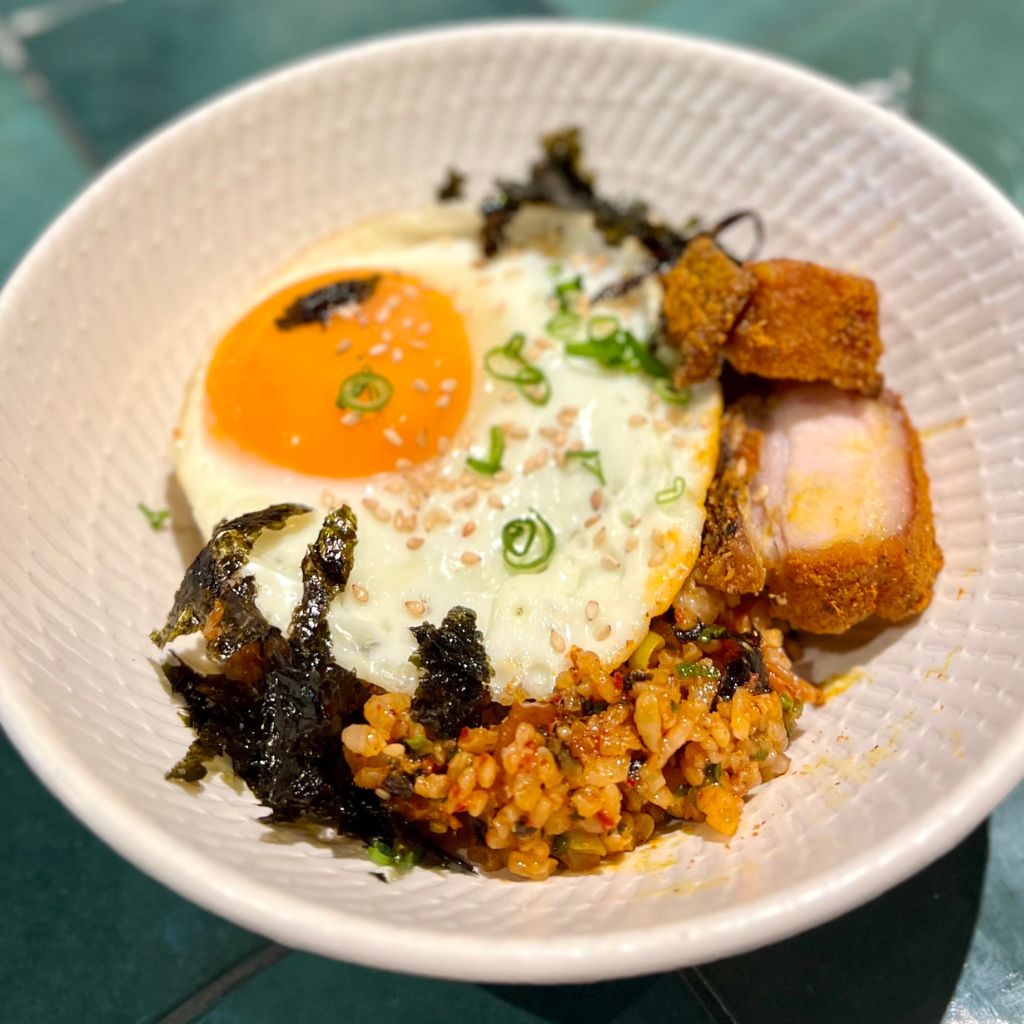
Moving on, we turned to Tambi’s pork belly nasi goreng (S$20). This dish was a work of precision. The curried crust enveloping the pork belly sang of finesse, releasing a satisfying plume of smoke when sliced. Also, the expertly rendered fat ensured the meat was flavourful without veering into overwhelmingly rich territory.
Nonetheless, the rice stirred some debate. While my companion yearned for the drier texture synonymous with nasi goreng, I was enamoured by Tambi’s rendition — rice moistened with a sauce that provided depth.
In my view, this dish struck a delicate balance. It mirrored the subtleties of a kimchi fried rice, but with a more refined touch that’s free of the usual greasiness.
The accompaniment, a sunny side up, was no afterthought. The absence of crisp edges on the perfectly cooked egg was evidence of the team’s meticulous approach to even the simple things.
The busy egg warmer in the middle of the open kitchen also underscored Tambi’s commitment to the minutiae that often elevate a dining experience.
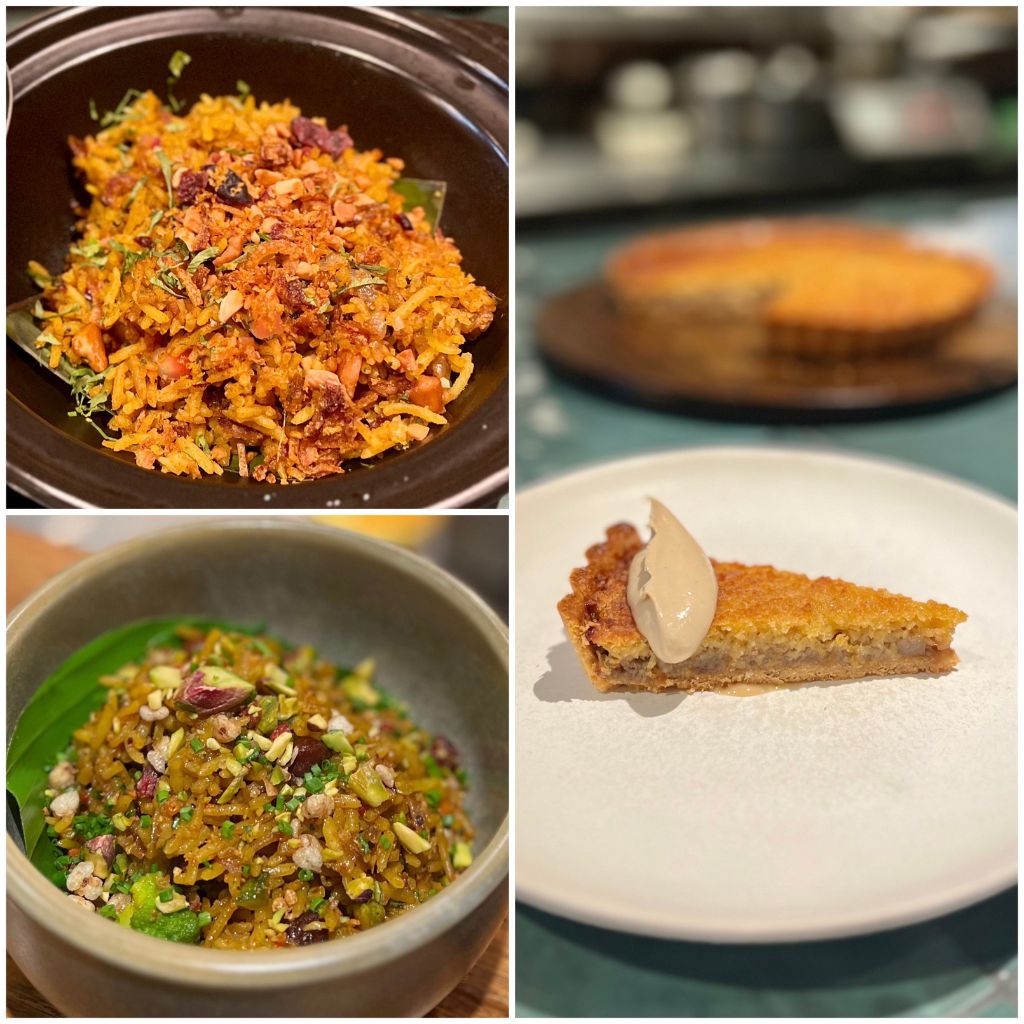
Riding the wave of curious flavours, I opted for the biryani (S$10) next, only to be met with an eyebrow-raising reaction from the staff.
“You do realise it’s essentially rice?” he queried.
To which I said: “But it’s stuffed with fruit and nuts, isn’t it?”
My palate, having relished Thevar’s tamarind black chickpea rice, held certain expectations. True, Tambi’s rendition was drier and not as intricate as Thevar’s version boasting pistachios and romanesco — but it certainly held its own. Unlike other biryanis, no curry was needed here. The moment the lid was lifted, the sweet aroma of hay bales and spices was simply a delight on its own.
For dessert, I was perplexed that the banana tart (S$18) was the only option in a Korean-Indian restaurant. I couldn’t fault it though, as the fragrance of the warm pie crust melded beautifully with the creamed coldness of the banana chantilly.
But considering its premium price and petite size, I couldn’t help but yearn for more substantial dessert offerings that fit the fusion theme I came for.
What it could improve on
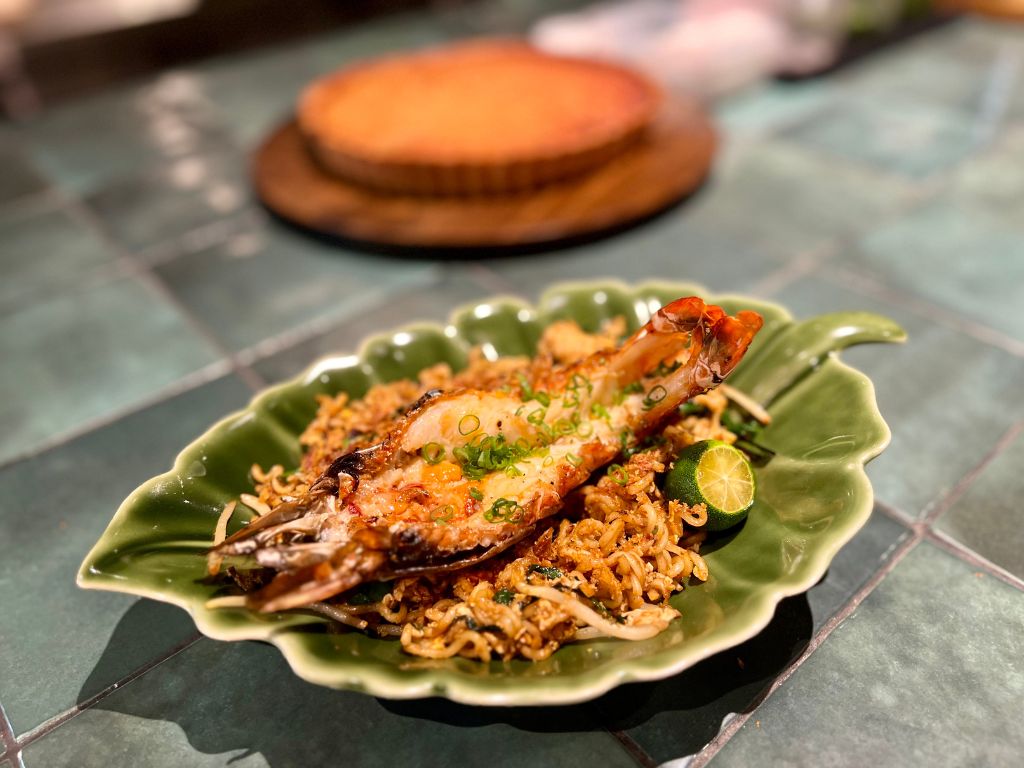
Tambi’s prawn Maggie goreng ($26) was… exactly what it claimed to be. No surprises there, besides the lack of it. Thankfully, the choice to use homemade noodles over those hydrogenated palm oil-infested instant ones spared my stomach some distress — a silver lining for anyone reminiscing about college late-night snacks.
But here’s the rub: The noodle’s texture? Think instant. Mushed, clumped, the kind of stick-together that screams “processed”. A salt and curry powder overload rendered it unpalatable. Even a valiant effort with a whole lime couldn’t rescue the dish.
Interestingly, a Tambi staff member proclaimed it as his favourite dish when asked. His reasoning?
“I’m a simple guy.”
Well, to each their own.

Intrigued by the promise of fusion, I sampled Tambi’s bibimmyeon (S$22, cold spicy thin noodles), keen to detect any nuances reminiscent of Kim’s famed milmyeon (cold wheat noodles with spiced broth) at Meta. While Tambi’s rendition was commendable, it fell short.
For me, the epitome of a cold Korean noodle strikes a harmonious chord between spicy, savoury, tangy, sweet, and fresh. It’s a standard unerringly embodied by Meta.
Tambi’s noodles, however, lacked that icy chill to complement the heat. While they leaned heavily on the spicy and acidic notes, some natural sweetness would have brought much-needed balance.
Considering the price and the portion, I was looking for a richer tapestry of flavours. A touch of cold broth, perhaps from a traditional stock or dongchimi water, combined with a fruit element, could have elevated this dish — and allowed it to retain its character without transforming it into a milmyeon.
However, it’s worth noting that Meta is a fine dining Michelin star restaurant, and so it might be remiss to expect the same standards from Tambi, which is positioned as a more casual eatery.
On the brighter side, the inclusion of roe added a delightful textural contrast to the dish.

The corn ribs (S$18), laced with gunpowder spice and paired with a feta dip, tantalised our taste buds. Still, the essence of indulging in corn on the cob is to relish that succulent burst with each bite, a sensation I found missing in Tambi’s rendition as there wasn’t enough moisture.
A dollop of butter would have improved the mouthfeel tremendously. Consequently, we resorted to slicing the kernels from the ribs to enjoy the dish.
***
Overall, our dining experience at Tambi vacillated between pleasure and perplexity. While the promise was a seamless blend of Korean and Indian cuisines, there were moments when the essence got lost in translation.
The availability of two pork-infused rice dishes — one predominantly Korean and the other unmistakably Indian — was emblematic of this divide. Instead of a harmonious blend, it felt like a choice between two worlds.
Also, the absence of any fusion Korean-Indian desserts made the experience unfinished. I’m thinking of a saffron and rose water sulbbang (Makgeolli bread) or a plated Korean-inspired kesari-based entremet dessert. Ending on a banana tart just felt trivial.
Nonetheless, Tambi’s current offerings do contain sparks of culinary genius. With two gifted chefs at its helm, I remain optimistic about its evolution.
The melding of Korean and Indian flavours has immense potential — while the choreography is still in progress, I await the day they reveal their masterpiece. For now, the dance continues.
Our quick takes
Is it conducive to conversation? Absolutely. Thanks to the open kitchen, we could also chat directly with the chefs, which made for an interactive dining experience.
Is a reservation necessary? Yes.
How to get there? Alight at either Telok Ayer or Tanjong Pagar MRT stations if you’re taking the train.
HungryGoWhere paid for its meal at this restaurant for this review. Still hungry? Read our reviews of Cedric Grolet and Espoir.
Book a ride to Tambi.
Do explore the new GrabFood Dine-in service for awesome deals.

